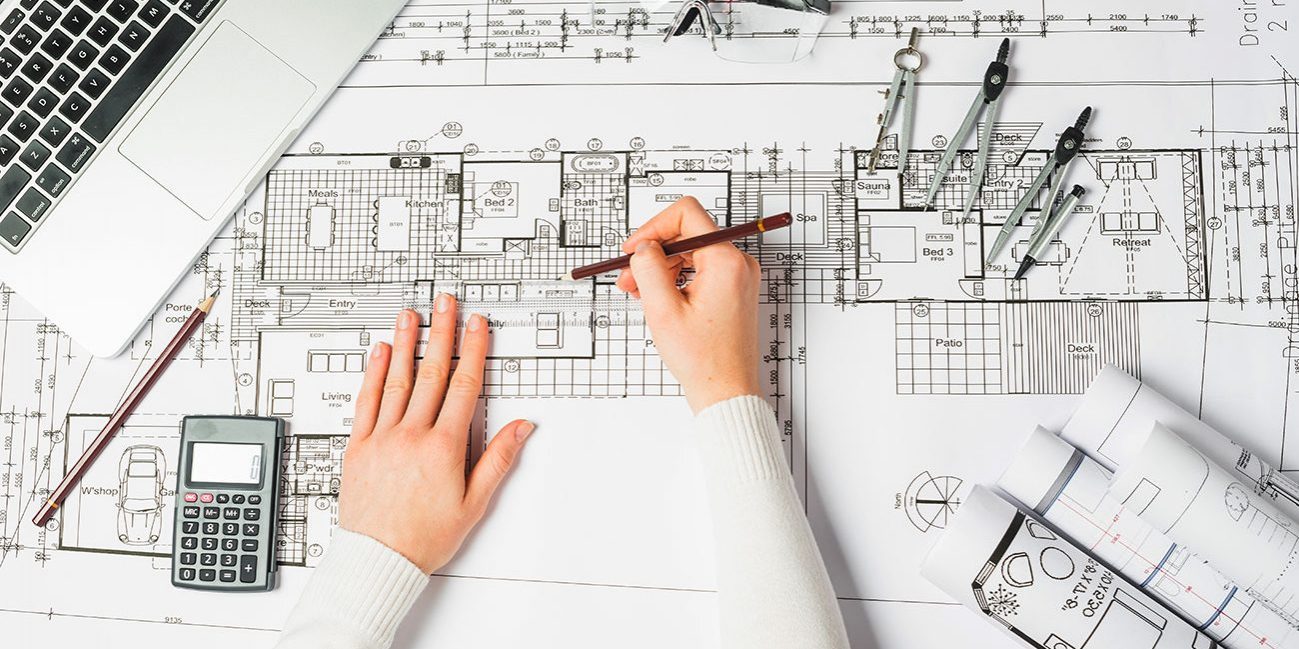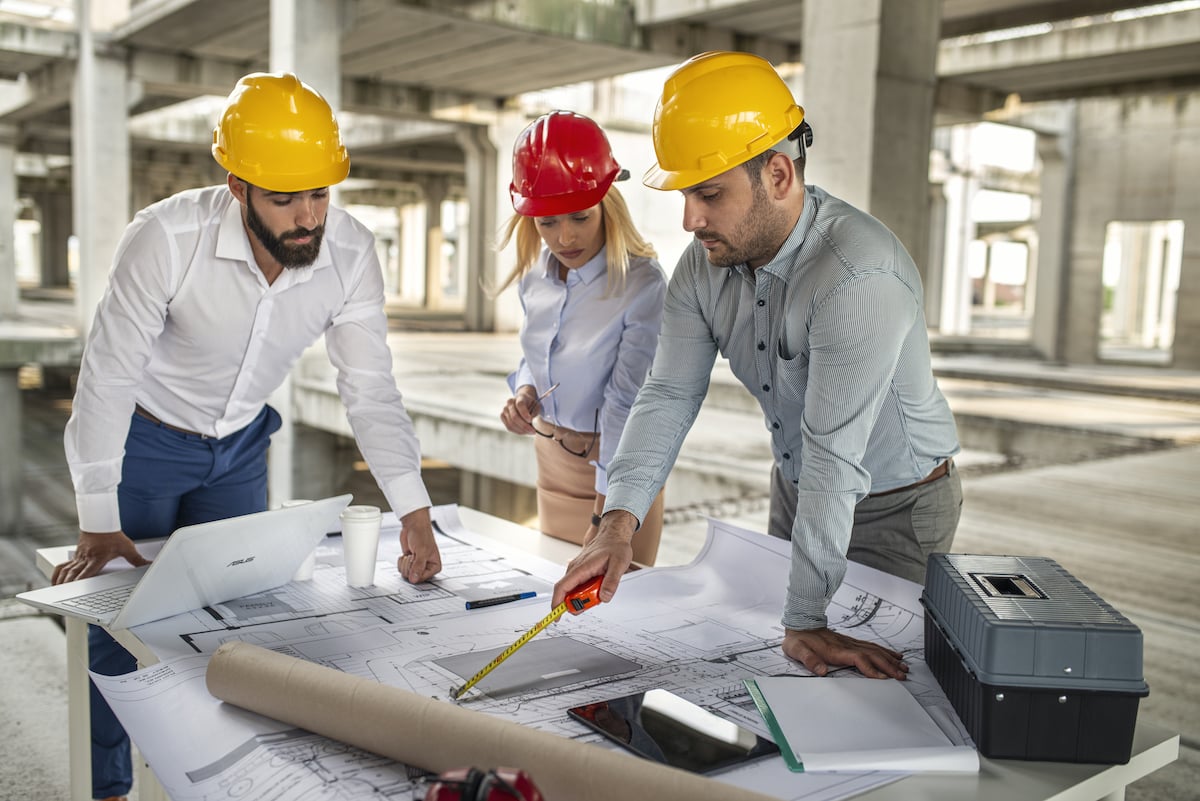Architect Guide to Sustainable Building Materials
Architect Guide to Sustainable Building Materials
Blog Article
The Function of Sustainability and Technology in Modern Architect Practices
Sustainability and innovation are reshaping contemporary style in means you might not expect. By embracing environmentally friendly materials and clever technologies, engineers are not simply developing buildings; they're crafting settings that enhance our top quality of life. This change isn't nearly looks or functionality; it has to do with creating a responsible method to our planet's future. What's driving this transformation, and just how can these modifications influence your area?
The Importance of Sustainable Style
Lasting style is necessary not simply for the setting yet likewise for enhancing our quality of life. When you embrace lasting style, you're not just decreasing your carbon footprint; you're producing rooms that promote health and wellness and wellness.
Additionally, sustainable design typically causes more powerful neighborhoods. When buildings are designed with environmentally friendly practices, they can influence others to do the same, fostering a society of sustainability. You'll notice boosted home values and a greater feeling of pride in your environments.
Finally, by focusing on sustainability, you're spending in the future. You're guaranteeing that future generations delight in a healthier earth and lively communities. So, when you consider your next job, consider how lasting architecture can elevate your life and those around you.
Cutting-edge Products Transforming Building Practices
As you discover cutting-edge materials in architecture, you'll locate that biodegradable building products are improving exactly how we believe regarding sustainability. Recycled content advancements are providing brand-new life to waste, while wise product technologies enhance constructing efficiency. These developments not just advertise eco-friendliness yet also push the borders of style.
Naturally Degradable Construction Products
While conventional building products frequently add to environmental deterioration, naturally degradable construction products are arising as a sensible choice that changes structure methods. By including naturally degradable alternatives right into your layouts, you're not just enhancing aesthetic charm; you're additionally making a favorable influence on the earth. As you adapt to these innovative materials, you'll discover that they supply toughness and versatility, enabling you to develop structures that straighten with modern-day values of sustainability and duty.
Recycled Content Developments
In recent years, ingenious products with high recycled web content have transformed building practices, supplying engineers interesting new alternatives - Architect. You can now integrate materials like recycled steel, which not just decreases waste yet also flaunts outstanding stamina. Recycled glass is another wonderful option, supplying aesthetic charm while lessening ecological effect

Smart Material Technologies
Smart material technologies are reshaping the method you assume regarding developing techniques, providing dynamic remedies that adapt to altering conditions. These innovative materials, such as self-healing concrete and thermochromic glass, improve building efficiency and sustainability. Think of structures that can adapt to temperature modifications or repair themselves when damaged-- these improvements are no longer just ideas. By integrating smart products, you can produce energy-efficient layouts that respond to their atmosphere, reducing general energy intake. The ability to adjust and keep track of in real-time streamlines maintenance and prolongs the life-span of buildings. As you accept these technologies, you're not simply introducing; you're contributing to an extra lasting future in style, merging functionality with environmental duty.
The Assimilation of Smart Technologies in Layout
As modern technology evolves, incorporating smart solutions right into architectural layout ends up being essential for producing sustainable and efficient areas. You can integrate smart technologies like developing monitoring systems, which enhance power use and improve resident convenience. Sensing units can keep an eye on ecological conditions, readjusting lighting and temperature level instantly based on real-time information. This adaptability not only boosts customer experience but also minimizes energy intake.
Including Web of Things (IoT) tools enables smooth communication among different structure systems, enabling you to make data-driven decisions that enhance performance. Smart products that react to environmental modifications can additionally improve your style, offering dynamic options to ever-changing problems.
Energy Performance and Renewable Resource Solutions
While several designers concentrate on aesthetic appeals, prioritizing energy efficiency and renewable resource options is necessary for sustainable style. You can start by integrating passive solar style, which maximizes all-natural light and warmth, minimizing dependence on artificial lights and furnace. Utilize high-performance insulation and energy-efficient home windows to minimize power loss.
Don't ignore renewable power systems-- set up solar panels or wind turbines to produce clean energy on-site. You can also consider incorporating geothermal heating and cooling down systems for an extra sustainable temperature regulation.
By selecting energy-efficient appliances and illumination, you'll not only lower energy usage but additionally lower operational prices for developing residents.
Including these principles right into your layouts not just benefits the atmosphere but likewise boosts the building's allure and value. Inevitably, your dedication to energy performance and eco-friendly energy will certainly set your projects apart in a competitive market.
Water Preservation Approaches in Modern Design
Including water preservation approaches into modern-day architecture is crucial for creating lasting structures that lessen environmental impact. You can accomplish this by incorporating rain harvesting systems, which keep and accumulate rain for watering and non-potable usages. Carrying out low-flow fixtures and clever watering systems likewise reduces water usage, ensuring effective usage throughout the structure.
Consider making use of drought-resistant landscaping, which needs less water and advertises biodiversity. Incorporating permeable paving materials permits rain to penetrate the ground, reducing drainage and reenergizing groundwater materials.
In addition, mounting greywater recycling systems can repurpose water from sinks and showers for commode flushing or irrigation, more conserving sources.
The Influence of Biophilic Layout on Health
Biophilic design brings nature indoors, and you'll see its positive results on your health and happiness. By boosting interior air top quality and attaching you with natural environments, these spaces can change your day-to-day experience. Let's discover how integrating these functions can increase your general wellness.
Nature's Influence on Health and wellness
Just how does our atmosphere form our wellness? When you incorporate elements of nature right into your environments, it can considerably boost your psychological and physical wellness. Biophilic design, which emphasizes all-natural light, plants, and natural products, fosters a sense useful link of link to the outdoors. This connection can reduce stress and anxiety, increase state of mind, and enhance cognitive function. You might locate that rooms filled up with greenery encourage creative thinking and productivity, making your everyday jobs feel extra pleasurable. In addition, all-natural elements can aid you feel more relaxed and concentrated, advertising general health. By prioritizing nature in your environment, you're not simply improving your area; you're likewise nurturing your health and joy. Accepting biophilic design is an action towards a much healthier way of living.
Enhancing Indoor Air Quality
While many individuals concentrate on aesthetics and capability in layout, improving interior air top quality plays an important function in your total health. Poor air high quality can lead to health and wellness concerns like headaches, exhaustion, and respiratory system troubles. By including biophilic design aspects, you can boost air high quality normally. Plants, for circumstances, not just beautify your area yet likewise filter toxic substances and boost oxygen degrees. Making use of products with low volatile organic substances (VOCs) further contributes to a healthier indoor environment. Furthermore, making the most of all-natural air flow aids decrease interior toxins. Focusing on these elements in your style will certainly not only raise your room but likewise promote a sense of calm and health. Eventually, a concentrate on air high quality is important for a sustainable and healthy and balanced living atmosphere.
Connection With Natural Environments
When you attach with natural elements in your area, you not only boost its visual allure however likewise significantly boost your well-being. Biophilic design motivates you to incorporate features like plants, all-natural light, and natural materials. These components create a soothing atmosphere, lowering tension and anxiety.
Future Trends in Sustainable Architectural Practices
As the globe faces pressing ecological difficulties, architects are increasingly accepting ingenious techniques to sustainability that redefine just how we design browse around here and develop. You'll see a rise in biophilic design, incorporating nature right into metropolitan rooms to enhance well-being and lower power consumption. Smart modern technologies, like AI and IoT, are improving energy monitoring in buildings, enhancing resource usage, and decreasing waste.
Moreover, modular building is gaining traction, enabling quicker, much more efficient building processes while reducing ecological effect. The usage of sustainable materials, such as recovered wood and recycled steels, is coming to be standard practice. As you discover these patterns, expect a change towards circular style, stressing the lifecycle of products and promoting reuse and recycling.
These forward-thinking strategies not just address environmental problems however also develop healthier, more resistant communities. By remaining notified about these patterns, you can assist shape a lasting future in style.
Frequently Asked Inquiries
How Can Sustainability Affect Project Budgets and prices?
Sustainability can considerably affect task costs and spending plans. You may find that first investments in eco-friendly materials or modern technologies result in lasting financial savings through energy efficiency, minimized waste, and possible federal government motivations, inevitably stabilizing the total expenses.
What Certifications Exist for Sustainable Architecture?
You'll find several accreditations for lasting style, consisting of LEED, BREEAM, and the Living Building Difficulty. These accreditations help you show your commitment to sustainability and can enhance your project's credibility and attract customers.
How Does Local Culture Influence Lasting Style?
Neighborhood culture shapes sustainable layout by mirroring area worths, products, and practices. You'll discover that incorporating local aesthetic appeals and visit their website practices not just respects heritage yet also boosts the performance and acceptance of your architectural projects.
What Role Does Customer Education Play in Sustainable Practices?
Customer education and learning's necessary for promoting lasting practices. When you educate customers regarding benefits, expenses, and ecological influences, you empower them to make informed decisions, cultivating a collaborative strategy that enhances the job's general sustainability.

Just How Can Architects Determine the Success of Sustainability Campaigns?
You can gauge the success of sustainability initiatives by tracking power intake, assessing material efficiency, and celebration responses from clients. Normal audits and comparisons versus standards will certainly help you improve your approaches and display renovations properly.
By incorporating smart materials, you can develop energy-efficient layouts that respond to their setting, lowering general power intake.While lots of designers focus on visual appeals, focusing on power efficiency and sustainable energy options is crucial for lasting layout. Biophilic style, which stresses natural light, plants, and organic products, promotes a sense of connection to the outdoors. Biophilic layout encourages you to include attributes like plants, all-natural light, and natural products. As you check out these fads, anticipate a change towards circular layout, highlighting the lifecycle of products and advertising reuse and recycling.
Report this page